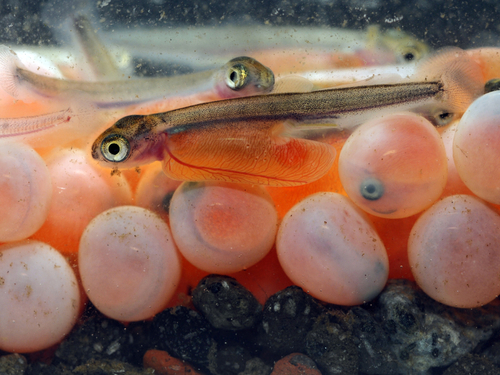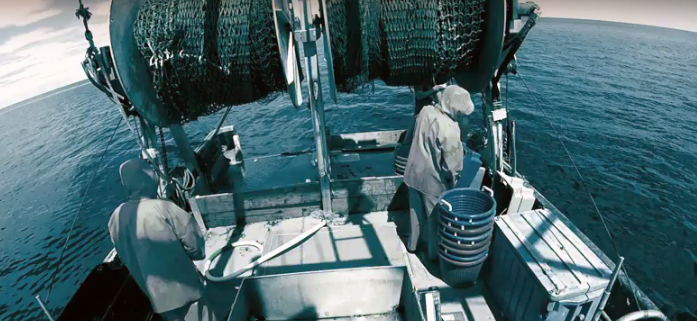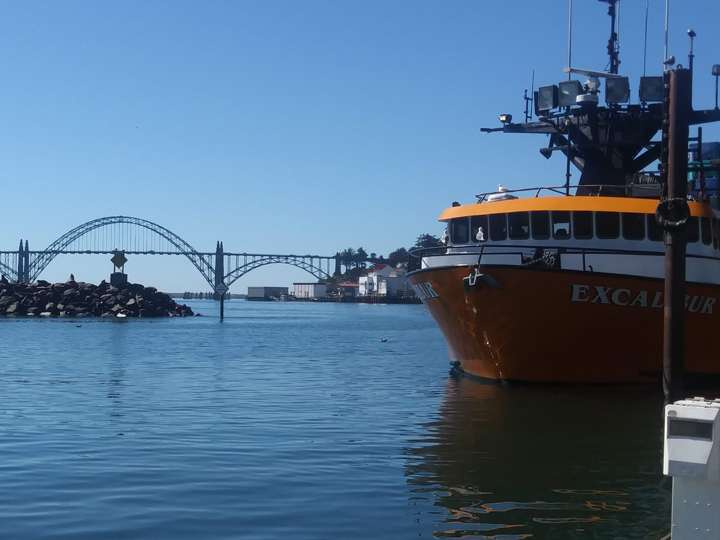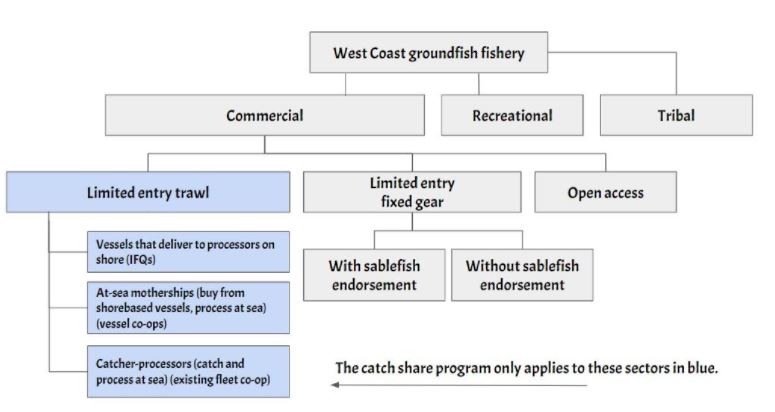Acceptable biological catch (ABC). A scientific calculation of the sustainable harvest level of a fishery, used to set the upper limit of the annual total allowable catch.
Accountability measure (AM). A management control (such as a harvest limit) designed to prevent annual catch limits from being exceeded.
Anadromous. Fish that spend their adult life in the sea, but swim upriver to freshwater spawning grounds in order to reproduce.
Annual catch limit (ACL). ACLs are a cornerstone of the reauthorized Magnuson-Stevens Act of 2006. ACLs are vaguely defined in the Act as the calculated catch yield that cannot be exceeded for a particular species. Fisheries managers use the best available science to calculate the value of ACLs and seasonal limits.
Biological opinion (BO, BiOp). A scientific assessment issued by the National Marine Fisheries Service or U.S. Fish and Wildlife Service, as required by the Endangered Species Act for listed species. Determines the likelihood of an action to jeopardize the existence of a species listed under the Endangered Species Act.
Bycatch. Fish that are unintentionally captured in a fishery, but that are discarded (returned to the sea) rather than being sold, kept for personal use, or donated to a charitable organization. Bycatch plus landed catch equals the total catch, or total estimated fishing mortality.
Central Valley Index (CVI). A measure of the number of salmon produced by California’s Central Valley rivers, this is the sum of annual ocean fishery landings south of Point Arena, plus the spawning escapement of adult Central Valley stocks in the same year.
Coded-wire tag (CWT). A small piece of stainless steel wire that is injected into the snout of a hatchery-produced juvenile salmon or steelhead. Each tag is etched with a binary code that identifies its release group.
Conservation objective. Sometimes called the spawning escapement goal: the number of salmon needed to return to spawn in order to maintain the health of the stock.
de minimis. A restrictive harvest policy designed to minimize risks to stocks of concern while allowing minimal incidental impacts in fisheries targeting healthy and harvestable stocks.
Escapement. The number or proportion of fish surviving (escaping from) a given fishery at the end of the fishing season and reaching the spawning grounds.
Escapement goal. Same as “conservation objective” (see above).
Evolutionarily significant unit (ESU). A distinctive group of Pacific salmon, steelhead, or sea‐run cutthroat trout that is uniquely adapted to a particular area or environment and cannot be replaced.
Fishery management council. A fisheries management body established by the 1976 Magnuson‐Stevens Fishery Conservation and Management Act to manage fishery resources in designated regions of the United States. There are eight regional Councils, including the Pacific Council.
FRAM. The Fishery Regulation Assessment Model, a model used in setting salmon harvest levels.
Klamath Management Zone (KMZ). The ocean zone between Humbug Mountain, Oregon, and Horse Mountain, California, where management emphasis is on Klamath River fall Chinook.
Management objective. An annual goal for spawning escapement, or a harvest rate, that may differ from the conservation objective.
Maximum sustainable yield (MSY). An estimate of the largest average annual catch or yield that can be continuously taken over a long period from a stock under prevailing ecological and environmental conditions. In Council management of naturally-spawning salmon stocks, MSY is usually approached as the number of adult spawners associated with this goal (Smsy).
National Marine Fisheries Service (NMFS). A division of the U.S. Department of Commerce, National Ocean and Atmospheric Administration. NMFS is responsible for conservation and management of offshore fisheries. The NMFS Regional Director is a voting member of the Council.
Optimum yield (OY). The amount of fish that will provide the greatest overall benefit to the Nation, particularly with respect to food production and recreational opportunities, and taking into account the protection of marine ecosystems. The OY is developed on the basis of the Maximum Sustained Yield from the fishery, taking into account relevant economic, social, and ecological factors.
Pacific States Marine Fisheries Commission (PSMFC). The PSMFC is a non‐regulatory agency that serves Alaska, California, Idaho, Oregon, and Washington. PSMFC (headquartered in Portland) administers salmon disaster relief funds, provides a communication exchange between the Pacific Fishery Management Council and the North Pacific Fishery Management Council, and provides information in the form of data services for various fisheries.
Preseason reports. Prior to the development of management options for the salmon season, the Council’s Salmon Technical Team develops four preseason reports: Review of Ocean Salmon Fisheries tallies catch and escapement from the most recent fishing season. Preseason I, Stock Abundance Analysis for [Year] Ocean Salmon Fisheries provides forecasts for stock abundance for the coming season. Preseason II, Analysis of Proposed Regulatory Options for [Year] Ocean Salmon Fisheries analyzes proposed regulatory options for the year’s ocean salmon fisheries. Preseason III, Analysis of Council Adopted Management Measures for [Year] Ocean Salmon Fisheries analyzes management measures adopted by the Council.
Rebuilding. The process of rebuilding an overfished stock. For salmon, rebuilding usually takes the form of reduced harvest limits.
Sacramento River fall Chinook (SRFC). Sacramento River fall Chinook are historically a significant stock in West Coast commercial and recreational fisheries.
Salmon Advisory Subpanel (SAS). A Council advisory body made up of commercial fishery, recreational fishery, tribal, and conservation representatives. These advisors play a large role in developing the Council’s annual salmon management options in March and April. SAS meetings are open to the public.
Salmon Technical Team (STT). The Salmon Technical Team helps the Council by summarizing data from the previous season, estimating the number of salmon in the coming season, and analyzing the effects of the Council’s recommendations and amendments. The STT is made up of scientists drawn from state, Federal, and tribal fisheries management agencies, all of whom have technical expertise in salmon management. STT meetings are open to the public.
Scientific and Statistical Committee (SSC). A Council advisory body made up of scientists with biological and economic expertise. The SSC gathers and analyzes statistical, biological, ecological, economic, social, and other scientific information that is relevant to the management of Council fisheries.
Southern Oregon/Northern California coho (SONCC). SONCC coho salmon are found from Cape Blanco, OR south to the Mattole River, just north of Punta Gorda, CA. The Rogue and Klamath rivers support the two largest components of the stock complex. SONCC coho are listed under the Endangered Species Act as threatened.
Southern Resident killer whales (SRKW). A population of killer whales listed under the Endangered Species Act. The Council is required to consider the effects of Council-managed salmon fisheries on Southern Resident killer whales when setting salmon seasons.
Spawning. The production and depositing of eggs by salmon or other fish. For salmon, spawning occurs in rivers and tributaries meeting certain healthy environmental conditions.
Status determination criteria (SDC). Criteria (such as target and minimum escapement levels) which allow the Council to monitor a stock to determine annually, if possible, whether overfishing is occurring and whether the stock is overfished.
Tule Chinook. Columbia River fall Chinook exist in two basic forms: “brights” and “tules.” Brights enter the river first, mature slowly, and retain their silvery oceanic coloration well into the freshwater migration. Tules are later-timed, are sexually mature upon freshwater entry, and spawn in lower mainstem and tributary areas, primarily below the Dalles Dam.



